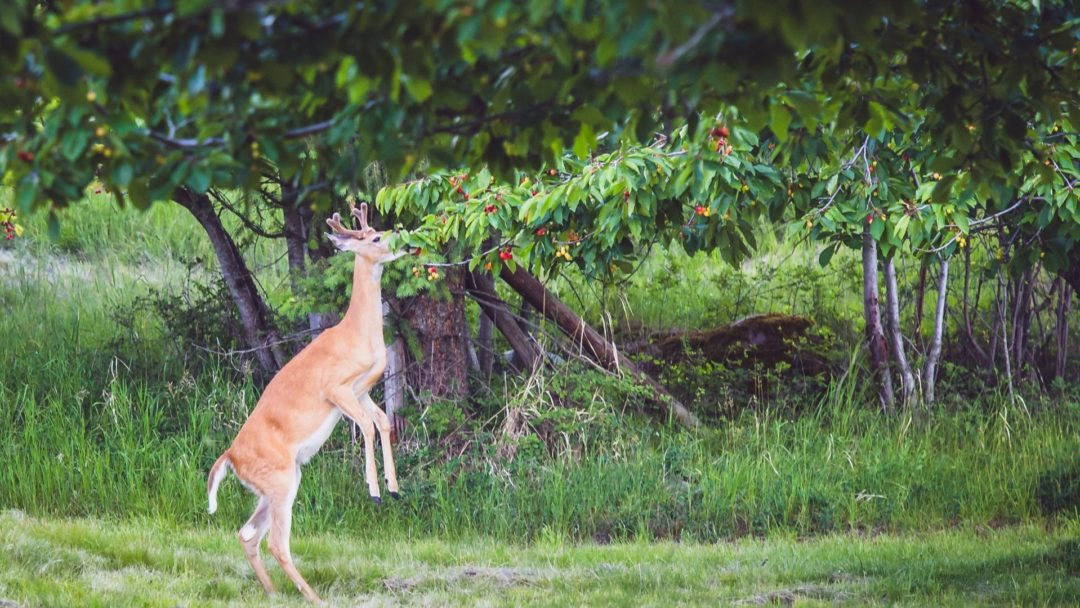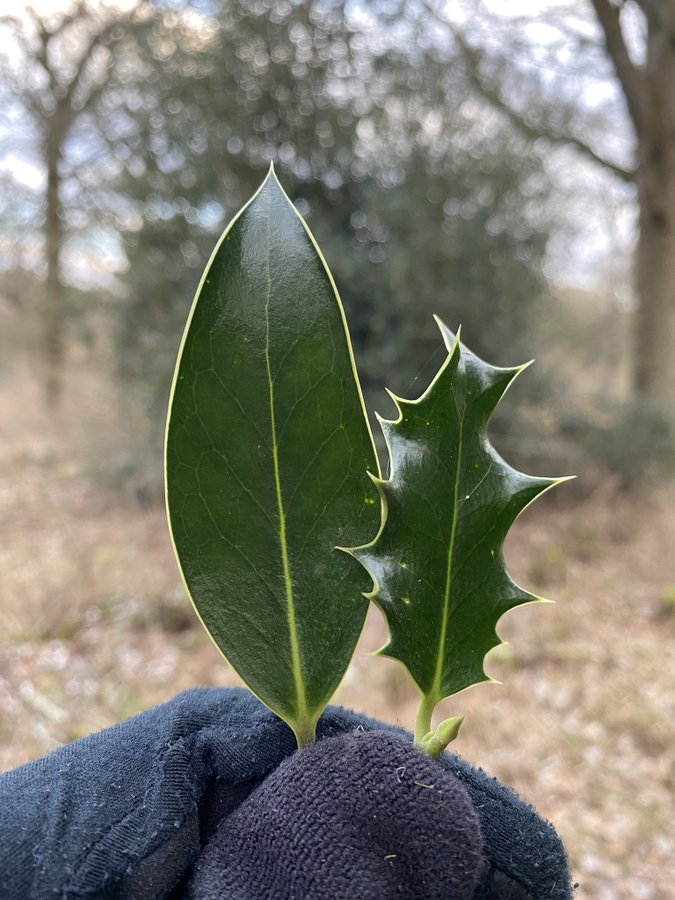On taller Holly trees, the upper leaves (which are out of reach) have smooth edges, while the lower leaves are prickly. And now we know why.
 Image credit: Steve Slater/Leif Bersweden
Image credit: Steve Slater/Leif Bersweden
Used as a popular decoration throughout the Christmas season, holly trees (Ilex aquifolium) sport shiny evergreen leaves and bright red berries that aren’t only loved by humans but also deer, for example.
The fact that although they’re famously sharp, not all holly leaves are prickly (even on the same tree) has definitely to do with the latter, a study published in the Botanical Journal of the Linnean Society suggests. Carlos Herrera of the National Research Council of Spain, who led the study in southeastern Spain, found that the leaf variations on a single tree are the combined result of animals browsing on them and the trees’ swift molecular response to this environmental shock, National Geographic reported.
The research team investigated this phenomenon, called ‘heterophylly’, on 40 holly trees, out of which 39 exhibited different kinds of leaves, both prickly and smooth.
 Pairs of prickly and nonprickly leaves borne on contiguous nodal positions of the same branchlet for four of the heterophyllous Ilex aquifolium trees sampled for comparative DNA methylation analyses. Image credit: Carlos M. Herrera
Pairs of prickly and nonprickly leaves borne on contiguous nodal positions of the same branchlet for four of the heterophyllous Ilex aquifolium trees sampled for comparative DNA methylation analyses. Image credit: Carlos M. Herrera

On the trees that looked like they had been browsed upon by wild goats and deer, the lower 8 feet (2.5 meters) had more prickly leaves, while higher up the leaves tended to be smooth. The team wanted to find out how these trees could adapt their leaf shape to the circumstances so quickly.

The leaves on a tree are all genetic twins, sharing the exact same DNA sequence. The team thus looked in the DNA for traces of a chemical process called methylation, which modifies DNA but doesn’t alter the organism’s genetic sequence. In this way, the researchers could determine whether leaf variation was a reaction by the plant to environmental or genetic changes.

“In holly, what we found is that the DNA of prickly leaves was significantly less methylated than prickless leaves, and from this we inferred that methylation changes are ultimately responsible for leaf shape changes,” Herrera said. “The novelty of our study is that we show that these well-known changes in leaf type are associated with differences in DNA methylation patterns, that is, epigenetic changes that do not depend on variation in the sequence of DNA.”

“Heterophylly is an obvious feature of a well-known species, and this has been ascribed to browsing. However, until now, no one has been able to come up with a mechanism for how this occurs,” said Mike Fay, chief editor of the Botanical Journal of the Linnean Society and head of genetics at the Kew Royal Botanic Gardens. “With this new study, we are now one major step forward towards understanding how.”

“This has clear and important implications for plant conservation,” Herrera said. Habitat loss has resulted in the depletion of genetic variation in many natural populations – for them, the ability to respond quickly, without waiting for slower DNA changes, could help survive accelerated environmental change. The plants’ adaptability, according to Herrera, is therefore an “optimistic note” amidst so many conservation concerns.

